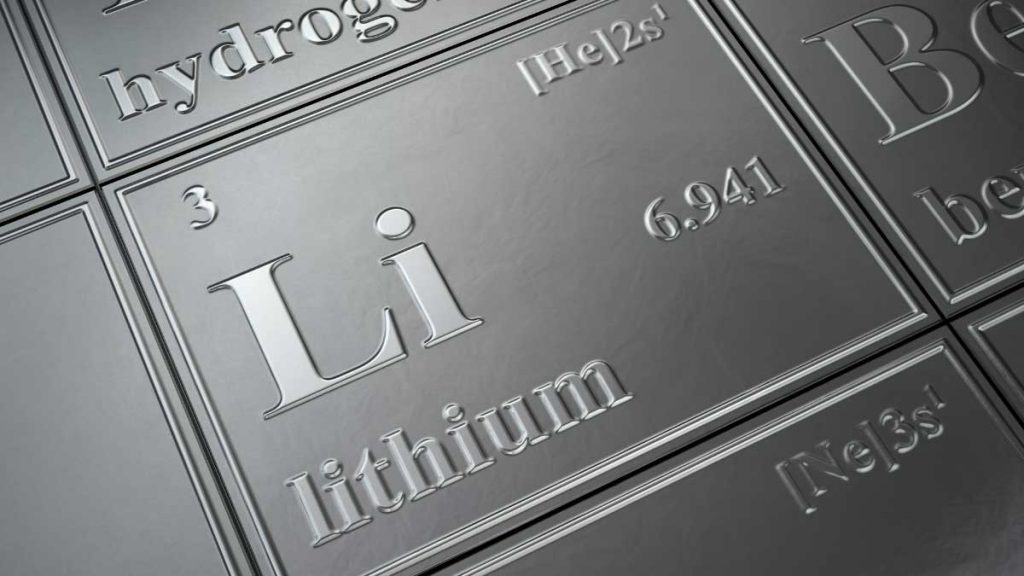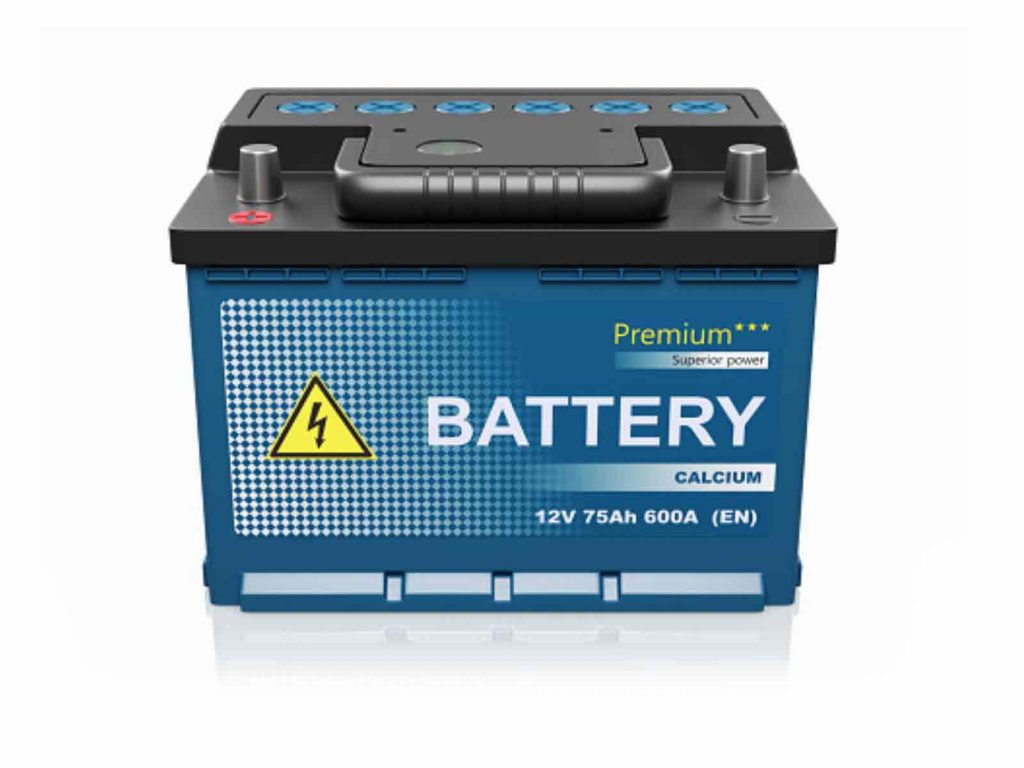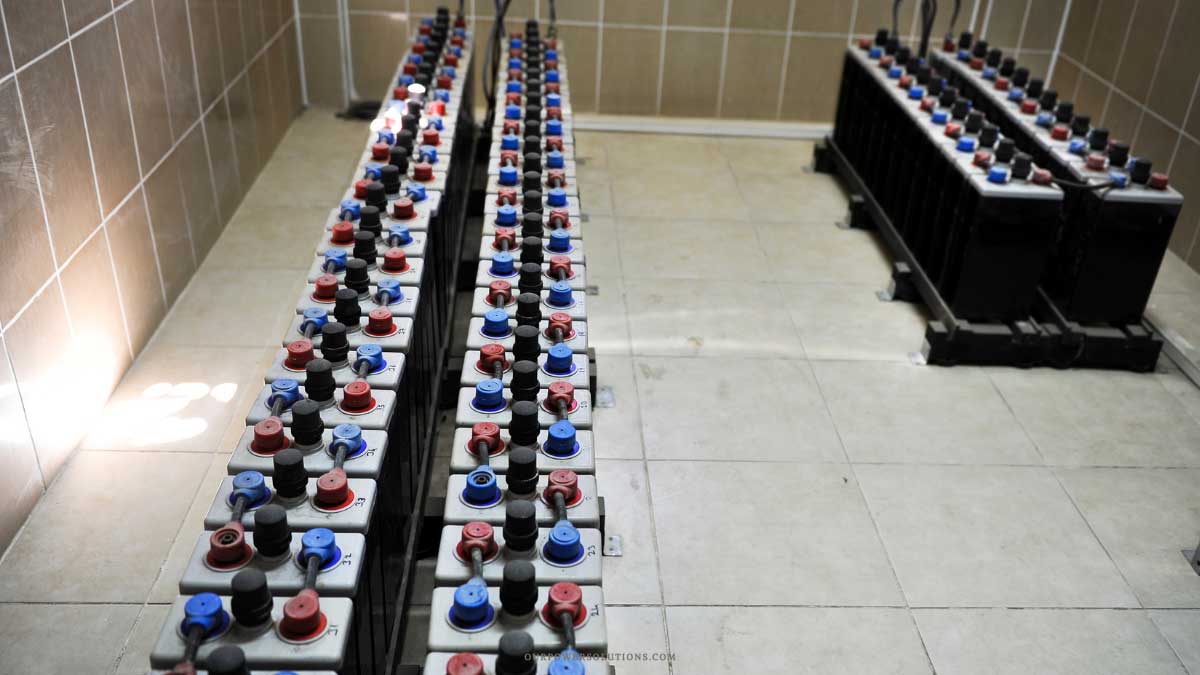The following article contains affiliate links and we earn a commission if you use them (at no extra cost to you)
While lead-acid makes for a great hobby when living off-grid; adding distilled water, venting for dangerous gasses, and heavy lifting. Well if you enjoy that type of stuff you don’t need to be switching to lithium. Lithium batteries remove the hassle of having to keep track of your batteries all the time.
LifePO4 batteries will give you more power won’t heat up when taking in huge amps and are half the weight. They are designed to store power easily while providing long-lasting peace of mind while at home or outdoors.
If you are ready to make the switch from Lead Acid batteries to Lithium you are in the right place. This article will take you through why you’ve made a great decision, take you through some of the best options, and tell you how to set up lithium batteries.
Generally to get the same runtime as a Lead-Acid battery on a Lithium battery you just need 60% capacity of the Lead-Acid battery you are replacing.
[table id=8 /]
What to look at when buying a battery and why LiFEPO4 battery is better.

Voltage
Voltage in a battery refers to the difference in electric potential between the positive and negative terminals.
Lithium Phosphate batteries are made of cells with a nominal cell voltage of 3.65. A typical 12V battery for a solar system sits at 14.6V that’s 4 cells while a 6V Golf battery type will be at 7.3V.
It is still called a 12V battery because the lead acid batteries are made up of 2V cells which in series make up 6V and 12V batteries.
Batteries can also be wired in series to provide 24v to 48v.
Lithium Cells should not be stored at high or too low voltage and are usually stored at around 3.4V.
Amp-Hour Rating
Batteries are rated in Ah (amp-hours). The amp hour rating is a measurement of the current output over time. For example, a 1 amp-hour battery should be able to continuously supply 1 amp for an hour.
Capacity is relative to the size of the Battery, this is usually printed on its side. The Amp-hour rating dictates how long you can use the battery and what types of loads you can place a battery. Remember the goal is to run the battery over a long period of time.
For example, if you have a 100 amp-hour battery you can draw out 100 amps in an hour but that is not advisable, you can also draw 10 amps over 10 hours or 20 amps over 5 hours.

Storage Capacity (Power)
Battery Capacity or power is measured in Kilowatt-hours. It is different from the Amp-hour rating as this gives you the total storage capacity derived from Voltage and amp-hours.
Capacity (Watt-hours) = Voltage x Ah
Battery “C” Rating
Now that you know about the Amps-hours and the Kilowatt-hours “C” rating is another important rating for your battery. In our definition of Amp-hour rating, we gave an example of drawing 1 amp in an hour from our battery. Well, a coin cell that is rated at 1 ah can’t actually provide 0.1 amps much less an Amp in an hour.
This is where the C rating comes in. A battery “C” rating indicates the maximum current a battery can deliver at any given moment. The “C” value is simply a multiplier of the amp-hour capacity rating of the battery. A battery rated as 10C can deliver a maximum current of 10 times the C value of the battery.
As an example, an 11Ah battery with a 10C discharge rating can deliver a maximum current of
11A (10 x C=10x 1.1 =11A).
Cycle Life
Every time a battery is discharged and recharged this is called a cycle. Cycle life is the number of times a battery can be charged and discharged. This is used to calculate the life of the battery. A lithium battery can last up to 5000 cycles at 80% depth of discharge.
Auto Balancing
Lithium batteries are made up of different cells to ensure that they work properly the cells always need to match in voltage. This is called balancing. You can either Top balance or bottom balance.
Top balancing is matching the voltage at the high end of the voltage curve at around 3.4 to 3.65 while bottom balancing matches the voltage at the low end at around 2-2.5V per cell.
You will also need to balance 2 more batteries connected in parallel. Some batteries have an auto-balancing function that can save you the headache while reducing the risk.
Terminals
There are different types of Terminals you can find on a battery. The most common types you’ll find on lithium batteries are the M6, M8, or M10 terminals.
The full description for our M8 bolt is M8 x 1.25 x 12mm.
M = Metric
8 = The nominal diameter in millimeters of the threaded portion of the bolt
1.25 = The pitch in millimeters of the threads (think of this as the distance between each thread)
12mm = Length of the bolt
BMS
A battery management system or BMS protects the battery from overcharging, undercharging and discharging too quickly. Most lithium batteries should come with an inbuilt BMS but if you are assembling lithium battery cells yourself ensure to have one in your system. You also need to ensure that all the terminals of the battery are connected to the BMS.
Size (Dimensions)
Battery sizing was made standard through the Battery standard council for Lead Acid batteries. Lithium battery manufacturers have maintained the standard and you will find the same battery sizes and grouping for Lithium batteries. However, because lithium batteries have more energy density the capacity will be higher by almost 40%.
| BCI Group | Length (in) | Width (in) | Height (in) |
| 24 | 10.25 | 6.81 | 8.88 |
| 24F | 10.75 | 6.81 | 9.00 |
| 24H | 10.25 | 6.81 | 9.38 |
| 24R | 10.25 | 6.81 | 9.00 |
| 24T | 10.25 | 6.81 | 9.75 |
| 27 | 12.06 | 6.81 | 8.88 |
| 27F | 12.50 | 6.81 | 8.94 |
| 27H | 11.75 | 6.81 | 9.25 |
| 31 | 13.00 | 6.72 | 9.44 |
| 8D | 20.75 | 11.3 | 9.88 |
PS: You will need to ensure that you the size of the battery to the terminals. Terminals can add extra inches on the battery.
Warranty
Different manufacturers offer different warranties for their batteries. The warranty can range from 1 year to 10 years. You only need a warranty for the first year as this is when issues may come up. But the warranty can be voided if the batteries are not handled properly or if there is evidence of abuse.
Waterproof
While some batteries have some level of waterproofing to prevent liquids from getting inside, water can still short-circuit the terminals. You should try as much as possible to shield your battery from any water exposure.
ExpertPower LiFePO4 Deep Cycle Battery
If you looking to store power for long periods of time for your home without having to worry about something going wrong the ExpertPower battery is the one to go for. It has a low discharge rate of less than 2% per month meaning you can keep it in storage without losing too much power. But it has safety measures that ensure you can easily leave it on autopilot without much supervision.
A built-in BMS (Battery Management System) protects the battery from overcharging and over-discharging. This means that the battery will shut down if it is discharged to around 10V and if overcharges is higher than 14.4. More or less the BMS circuit shutdowns and to bring it up a small charge must be applied to activate the circuit.
It also has a low-temperature cut-off that will stop discharge on the batteries at temperatures lower than -4 degrees Fahrenheit. This is because discharging lithium batteries below this temperature will destroy your batteries. This adds another layer of protection to your batteries. Although not entirely waterproof it is sealed to provide some level of protection but it is best to keep the battery away from water.
The best thing about this lithium battery is that you won’t have to worry about exceeding 50% depth of discharge as you have with deep-cycle lead-acid batteries. You can get the full 100ah or 200ah from the battery. But remember the recommended depth of discharge is 80% for longer life.
Also while recharging a lead acid with 50 amps can damage the battery this is safe with LifePO4 batteries meaning you can get them from zero to 100% in just over 2 hours. This can be around 5-6 hours with a 200 Watt panel on a good day.
Advantages
- In-built BMS
- Low temperature cut off
- 2500-7000 Life Cycles
- 10 Year Lifetime
Disadvantages
- 1 Year Warranty
Renogy 100Ah Smart LiFePO4 Battery
The Renogy Lithium Iron Phosphate battery is a smart battery packed with technology. Not only does it come with a BMS for overcharge and over-discharge protection but has a unique auto-balancing feature that ensures batteries connected in parallel are automatically connected.
The BMS can also communicate with the Renogy Monitoring Screen that feeds accurate state of charge (SoC) readings that ensure you can monitor voltages, capacity, and current in your battery bank. This is enabled by an RJ45 Communication port on the battery.
However, you still should not connect a Solar panel directly to these batteries. Ensure you have a suitable solar charge controller to protect your battery at all times. Also, this battery is specified only to be used in 12V applications so you CANNOT connect in series.
This is a great replacement or addition to an RV battery. A 100Ah lead acid battery can run tv, lights, and a 12V refrigerator on 50% discharge. Replacing it with a 100Ah LifePO4 battery can increase the capacity by 30% as you can discharge the lithium battery at 80%.
Again recharging a lead acid with 50 amps can damage the battery this is safe with LifePO4 batteries meaning you can get them from zero to 100% in just over 2 hours. This can be around 4-6 hours with a 200 Watt panel on a good day.
Advantages
4000 cycles
100A continuous discharge current
Wide range of operation temperature.
Disadvantages
Can only be used on 12V applications
ECO-WORTHY 30Ah LiFePO4 Battery
The Eco-worthy battery is a 30Ah deep cycle LiFePO4 Battery that measures 7.1 inches long, 3 inches in width, and 6.3 inches in height to its terminal. It only weighs around 7 pounds compared to a Standard AGM lead acid battery that will come in at 22 pounds.
This means it is easy to carry around and won’t require as much space but provides more power. Yes, more power, because of better efficiency and high depth of discharge. You can use this battery for your trolling motor but you need to ensure that the maximum continuous output current rating is higher than that of the trolling motor.
We ran a discharge test on the battery and the total energy discharged was a decent 236 Wh. This is enough power to run your devices and lights. Which makes it also a great backup battery. If you connect two of these batteries in parallel you can connect to a 1000-1500W inverter you ramp up the power and easily support a mini fridge, and LED floodlight and charge your devices for at least 6 hours.
Although this is a great alternative for your UPS Battery, it would not work to replace an SLA Battery in a UPS with a Lithium one. This is because the Standard UPS is designed to charge an SLA battery and won’t quite charge the lithium battery and may end up damaging it.
Advantages
More than 3000 life cycles
Lightweight
Built-in BMS
Long Battery life
Charge with either a Solar or AC Charger
Disadvantages
Not enough Cranking amps
Ampere LiFePO4 Deep Cycle Battery
If you can get over the name Ampere Time is a great value LifePO4 battery. This battery weighs around 25 lbs and measures 13 inches long, 6.82 inches wide, and 8.48 inches in height (9.3 to the terminal). The battery comes with a maximum continuous discharging current of around 100A. This makes it possible to use it as a starter battery as this can cover the cranking amps needed to start an engine in most vehicles, boats, or motorcycles.
Upgrading to lithium should have been pricey. Save up to 200 dollars with this battery which comes with a 5-year warranty. It can last from 4000 to 8000 cycles which are 10 years depending on the depth of discharge. It also has a built-in BMS that protects the battery and claims IP65 waterproofing (don’t try to test this though).
The issue with this battery is the low-temperature cut-off. Maybe because it also sold as a starting battery the low-temperature cut-off seems not to work or is not there at all. If you using it for solar it is best to use it with a controller with a low-temperature cut-off.
Advantages
Price
5-year Warranty
A 100A maximum continuous discharging current.
Comes with an M8 terminal.
Disadvantages
Not for cold temperatures or winter.
